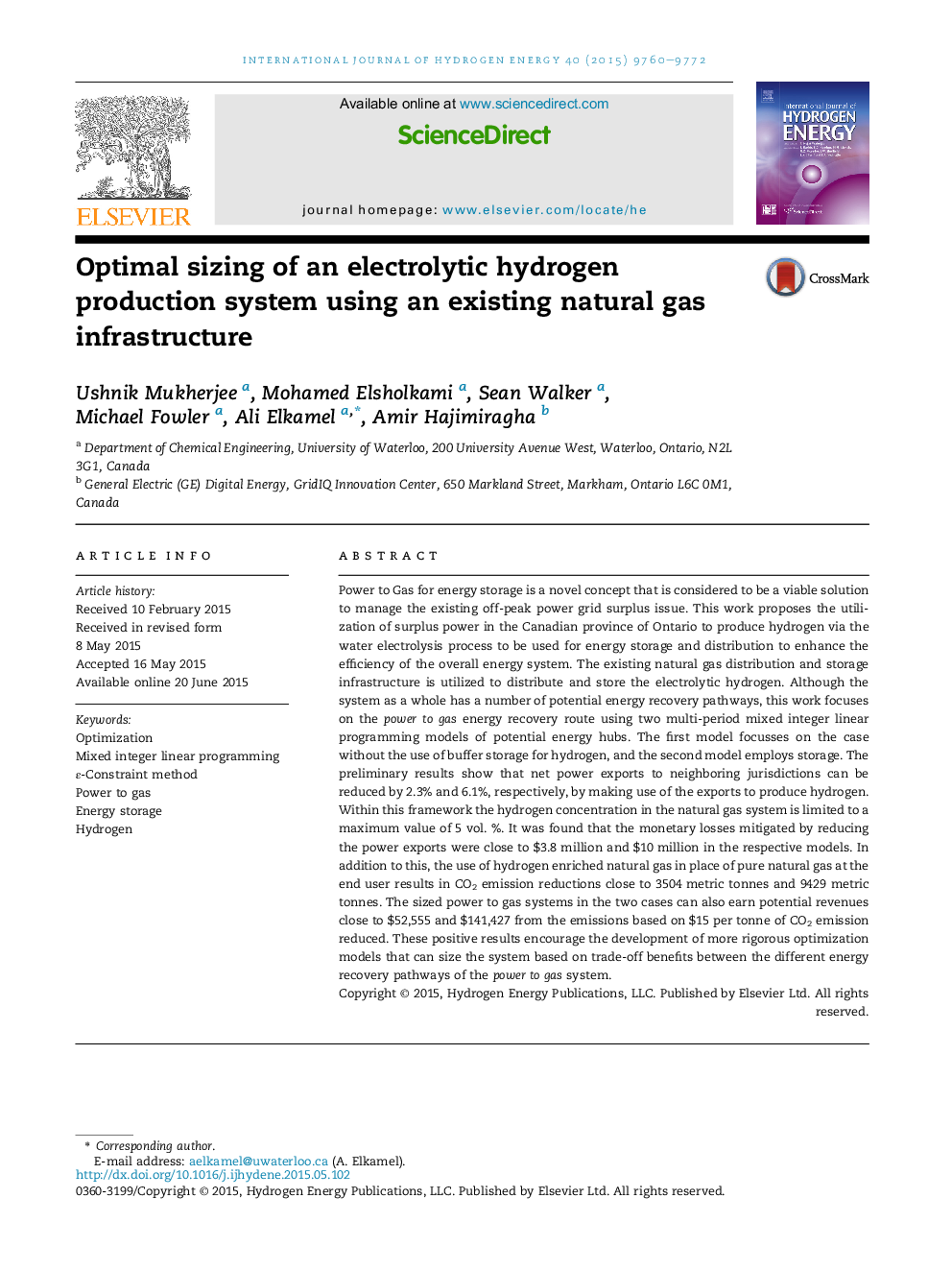| Article ID | Journal | Published Year | Pages | File Type |
|---|---|---|---|---|
| 1274869 | International Journal of Hydrogen Energy | 2015 | 13 Pages |
•We optimize the size and operation of an energy hub via a multi objective approach.•Electrolytic hydrogen is used as an energy vector to reduce surplus power exports.•The natural gas grid is used as a sink to store and use the electrolytic hydrogen.•We report the variation in electrolyzer and tank system size installed.•Potential profits from emission reduction and power export reduction are reported.
Power to Gas for energy storage is a novel concept that is considered to be a viable solution to manage the existing off-peak power grid surplus issue. This work proposes the utilization of surplus power in the Canadian province of Ontario to produce hydrogen via the water electrolysis process to be used for energy storage and distribution to enhance the efficiency of the overall energy system. The existing natural gas distribution and storage infrastructure is utilized to distribute and store the electrolytic hydrogen. Although the system as a whole has a number of potential energy recovery pathways, this work focuses on the power to gas energy recovery route using two multi-period mixed integer linear programming models of potential energy hubs. The first model focusses on the case without the use of buffer storage for hydrogen, and the second model employs storage. The preliminary results show that net power exports to neighboring jurisdictions can be reduced by 2.3% and 6.1%, respectively, by making use of the exports to produce hydrogen. Within this framework the hydrogen concentration in the natural gas system is limited to a maximum value of 5 vol. %. It was found that the monetary losses mitigated by reducing the power exports were close to $3.8 million and $10 million in the respective models. In addition to this, the use of hydrogen enriched natural gas in place of pure natural gas at the end user results in CO2 emission reductions close to 3504 metric tonnes and 9429 metric tonnes. The sized power to gas systems in the two cases can also earn potential revenues close to $52,555 and $141,427 from the emissions based on $15 per tonne of CO2 emission reduced. These positive results encourage the development of more rigorous optimization models that can size the system based on trade-off benefits between the different energy recovery pathways of the power to gas system.
